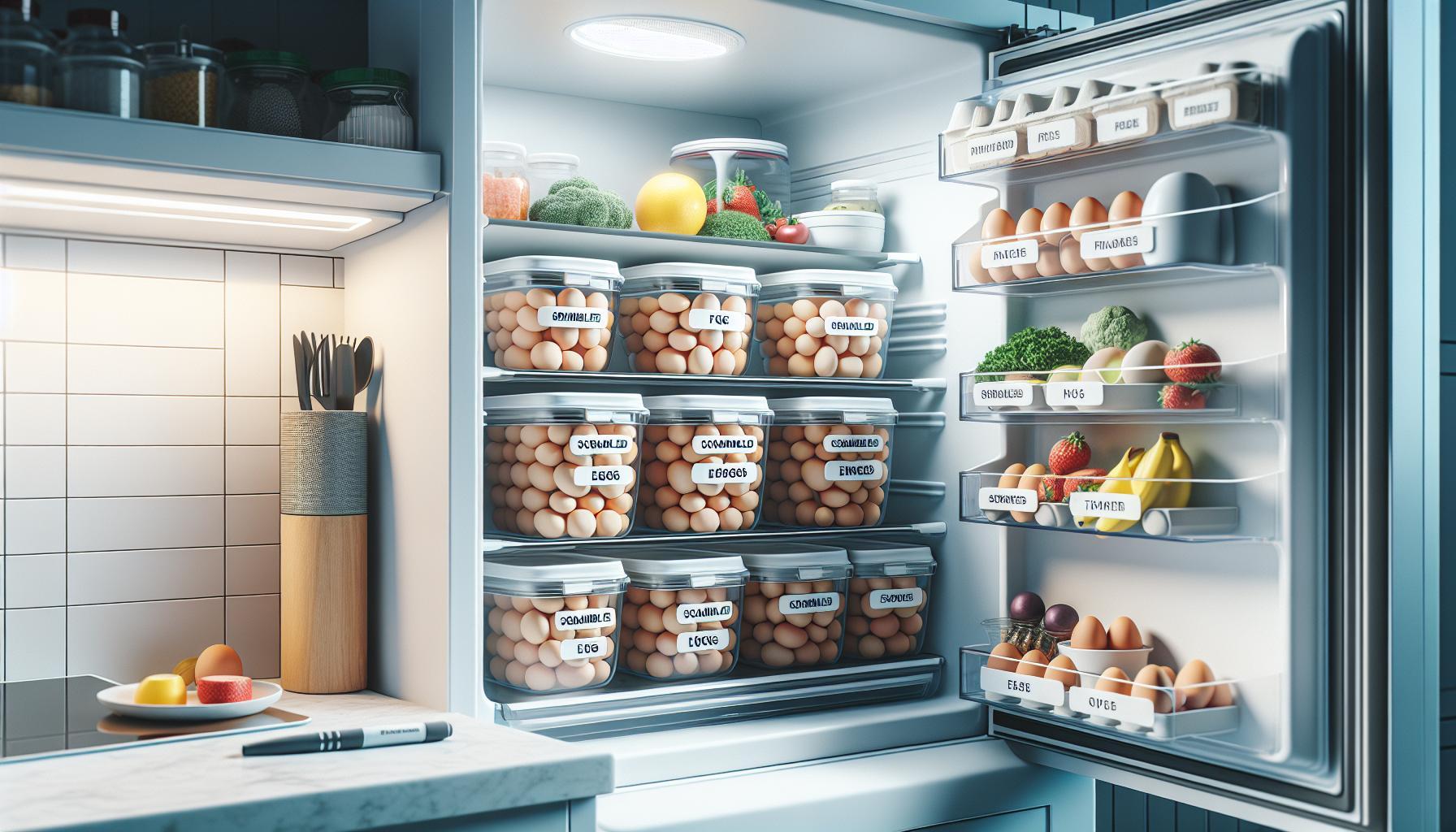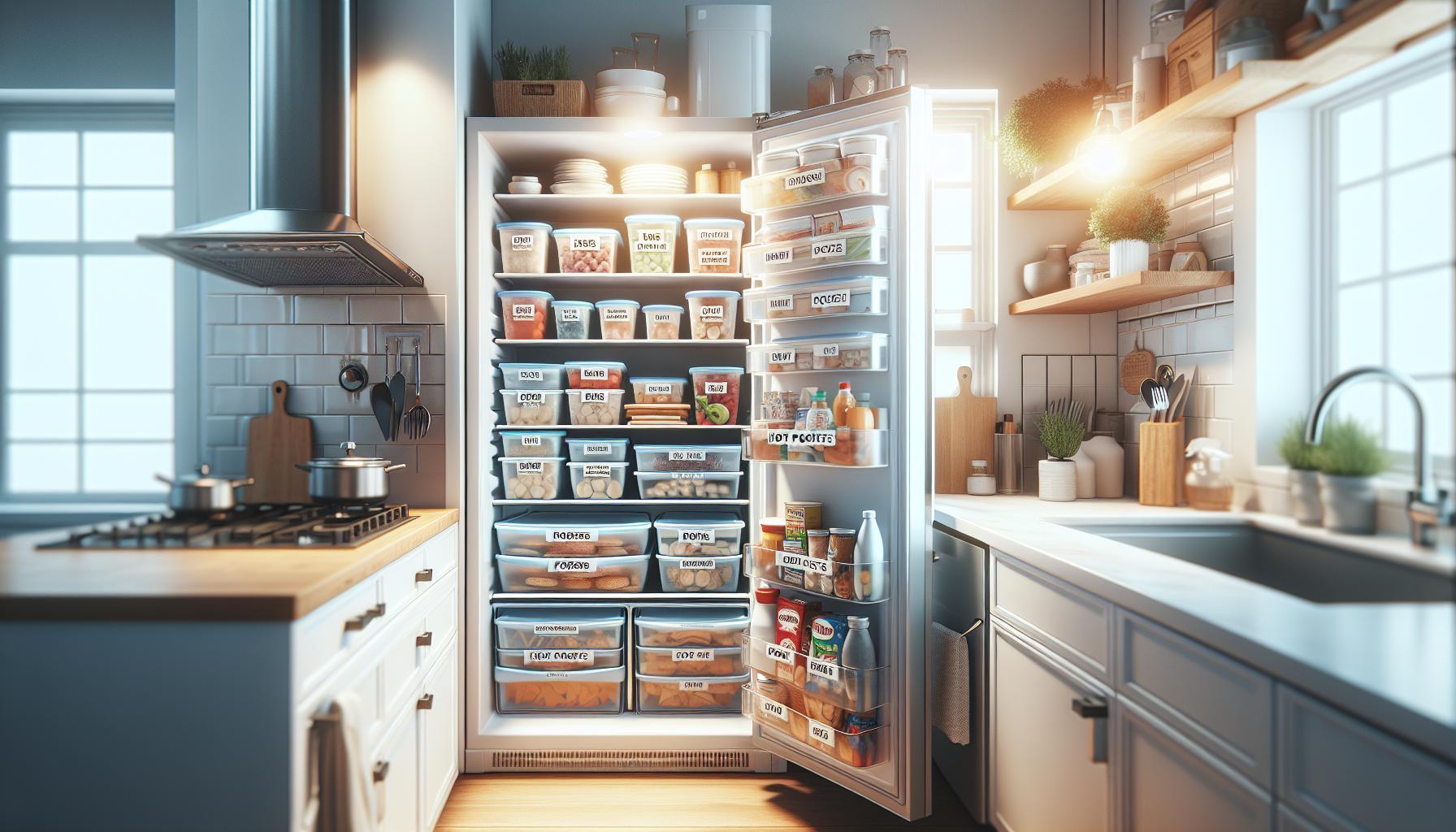Brie, often celebrated as the “Queen of Cheeses,” is beloved for its creamy texture and rich flavor. However, many cheese lovers often wonder: how long does unopened Brie last in the fridge? Knowing the shelf life of this gourmet delight is crucial for maximizing flavor and ensuring food safety.
When stored correctly, unopened Brie can maintain its taste and quality for a significant time. Understanding its longevity can help you enjoy this indulgent cheese at its best, avoiding waste and disappointment. With the right storage practices, you can savor every delicious bite without worrying about spoilage.
Dive into the details of Brie storage to keep your cheese experience delightful and worry-free. You’ll find practical guidelines that not only answer your questions but also enhance your appreciation of this exquisite cheese.
Brie Cheese Shelf Life: What to Expect
Brie cheese is a beloved delicacy, celebrated for its creamy texture and earthy flavor, but understanding its shelf life can be essential for enjoying it at its best. Generally, unopened Brie can last in the fridge for about 4 to 6 weeks past its expiration date when stored properly. However, this timeframe can vary depending on several factors, including the cheese’s freshness at purchase and storage conditions. Keeping Brie in a consistent, cold environment helps preserve its delicate flavor and texture.
Maintaining ideal storage conditions is crucial. The cheese should be kept in the coldest part of the refrigerator, ideally around 36°F to 40°F (2°C to 4°C). This temperature range slows down the spoilage process. Wrapping the Brie in wax paper, parchment paper, or plastic wrap can also protect it from absorbing strong odors from other foods and prevent it from drying out, thus retaining its creamy consistency.
The signs that indicate Brie is reaching or has surpassed its shelf life include an off or ammonia-like smell, visible mold (beyond the natural bloomy rind), or a chalky, dried-out texture. If you notice any of these signs, it’s best to err on the side of caution and discard the cheese. To maximize the lifespan and taste of your Brie, consider these practical tips: always check the expiration date, store it properly, and consume it within a reasonable timeframe after opening for the best flavor experience.
Ideal Storage Conditions for Unopened Brie
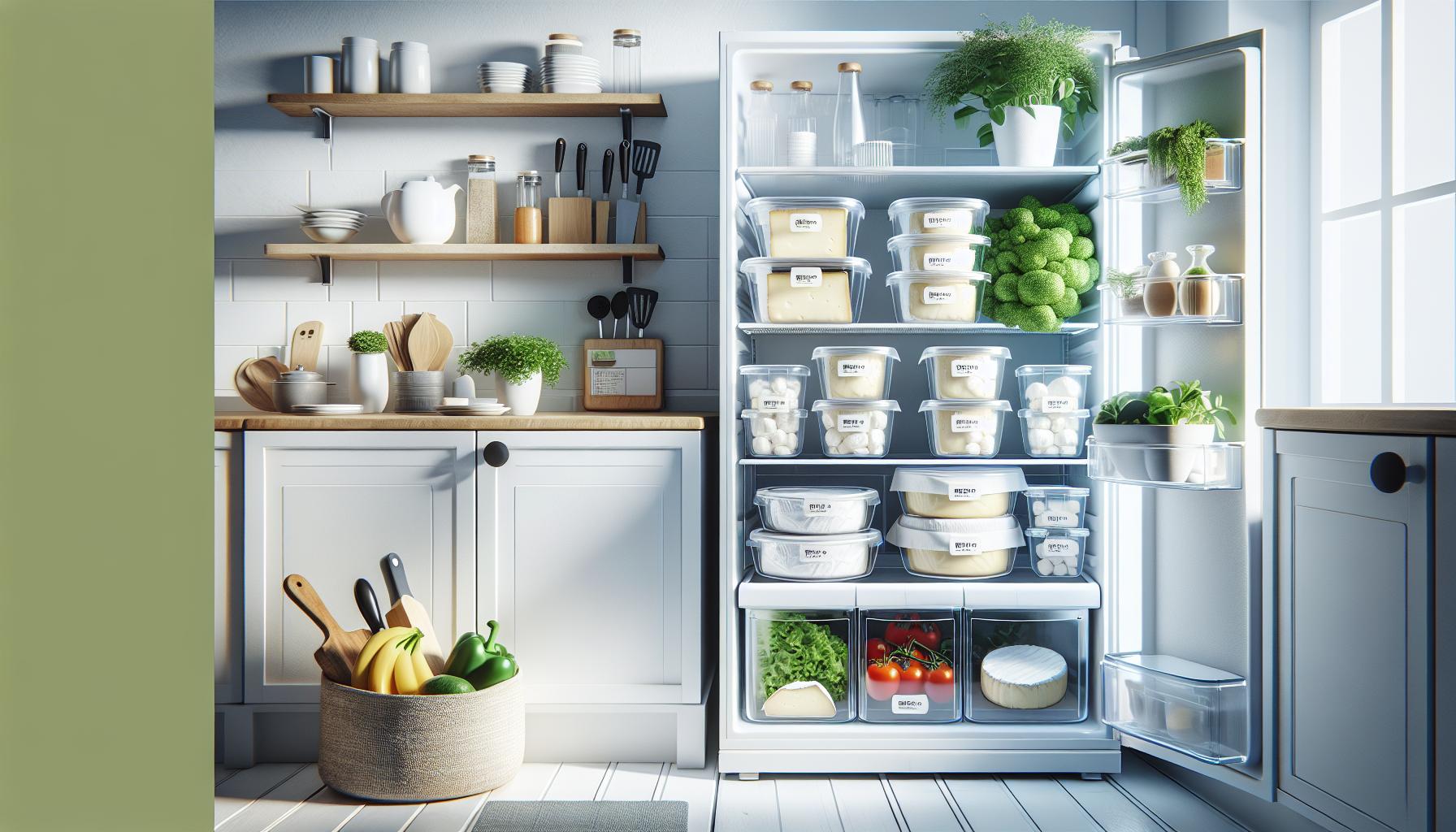
To maintain the quality and flavor of unopened Brie cheese, adhering to optimal storage conditions is vital. This delicate cheese thrives in a controlled environment that safeguards its creamy texture and rich, buttery taste. The refrigerator is the ideal home for Brie, but it’s important to place it in the coldest area, which is usually at the back of the fridge, rather than in the door where temperatures fluctuate. A consistent temperature between 36°F to 40°F (2°C to 4°C) helps slow down spoilage and preserves the cheese’s integrity.
Keeping Brie in its original packaging can be beneficial, but if you’ve removed it from that, consider wrapping it in wax paper, parchment paper, or plastic wrap. Avoid using foil as it can cause moisture buildup, leading to spoilage. Ensure that the wrapping is not airtight; Brie needs to breathe to maintain its flavor profile. Additionally, storing it away from strong-smelling foods, such as onions or garlic, prevents it from absorbing unwanted odors, which can compromise its delicate taste.
An often-overlooked aspect of storage is the influence of light on the cheese’s quality. Try to keep Brie in a dark part of the fridge or in a light-blocking container. It’s also wise to check the expiration date and ensure you consume it within a reasonable period after purchase. Following these guidelines will help ensure your Brie remains fresh and delicious for as long as possible.
Understanding the Signs of Spoilage
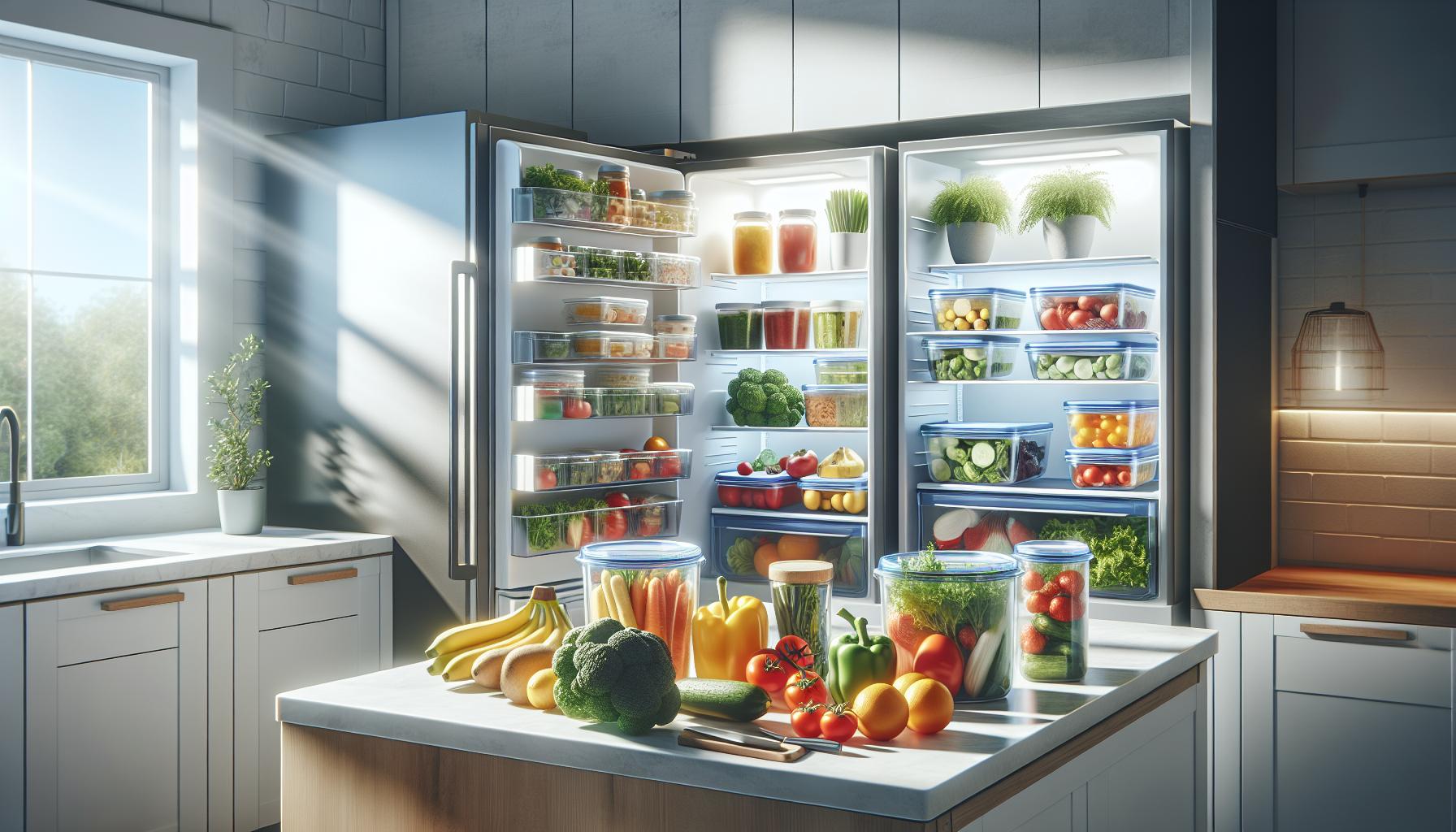
The creamy, delightful texture of Brie cheese can bring joy to any cheese platter, but it’s essential to recognize when this soft delicacy has passed its peak freshness. Spoilage can occur even in properly stored unopened Brie, and there are several signs to watch for to ensure that you don’t inadvertently consume spoiled cheese.
One of the primary indicators of spoilage is a change in the appearance of the cheese’s rind. Fresh Brie should boast a smooth, white exterior without any discoloration. If you notice patches of yellow, brown, or even mold that looks different from the typical white, it’s time to reconsider using the cheese. Inside, the texture should be soft but not overly slimy or wet; if the cheese feels excessively sticky or wet, it’s a strong sign of spoilage.
Additionally, the aroma of Brie provides critical insight into its freshness. A fresh wheel should have a subtle, pleasant aroma. If the smell is sour or ammonia-like, this is often a clear indication that the cheese is no longer safe to consume. As Brie ages, its flavor also changes; you might notice it becoming sharper or more pungent. While some may appreciate this characteristic, a drastic shift in flavor can indicate spoilage.
To maximize your Brie experience and ensure safety, always adhere to the best practices for storage and check the packaging for expiration dates. If you suspect any signs of spoilage, including unusual texture, color, or odor, it’s best to err on the side of caution and discard the cheese. Enjoying Brie at its best requires vigilance, but by recognizing these signs, you can savor the delicious qualities of this treasured cheese without concern.
How to Properly Store Unopened Brie
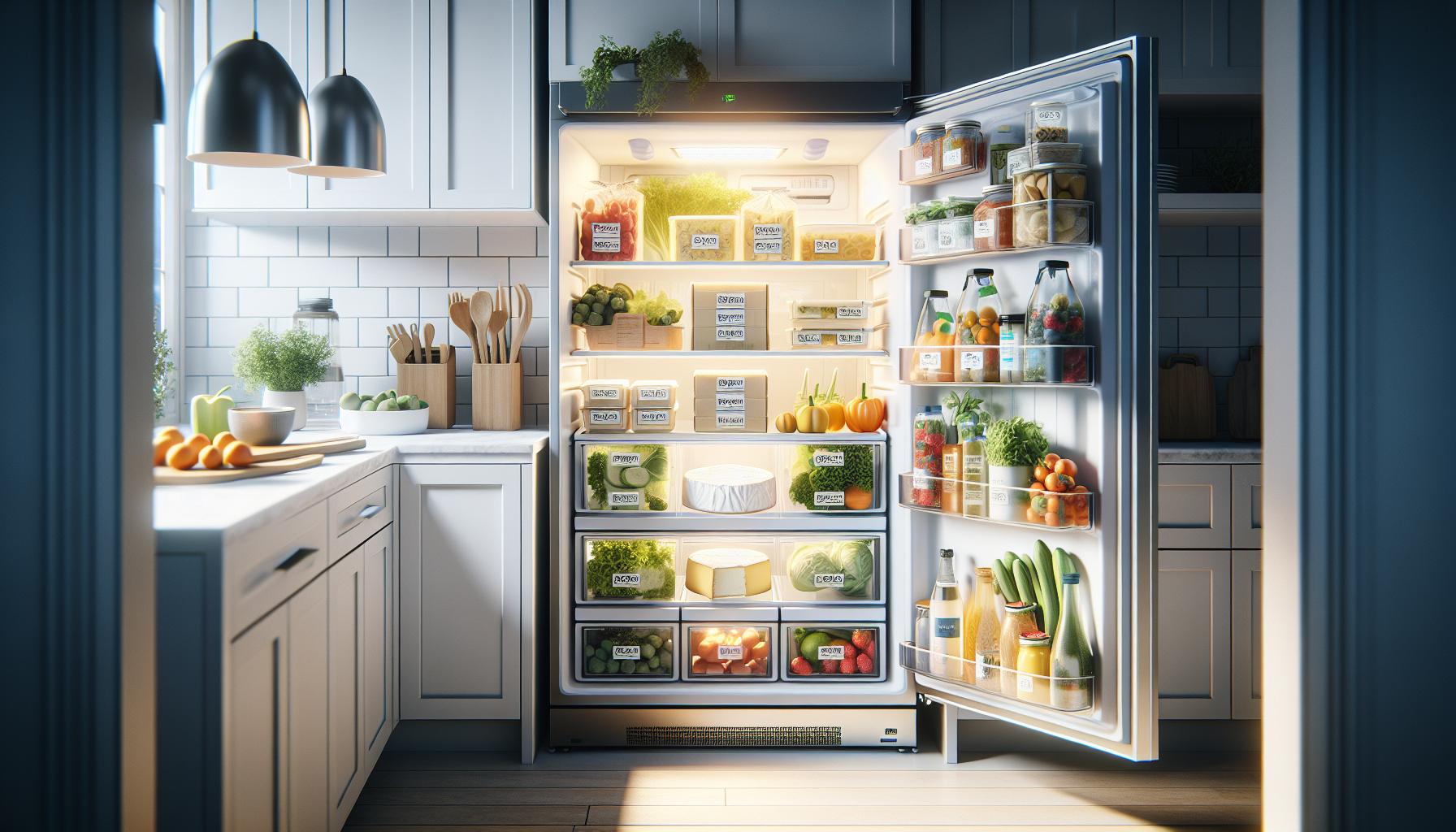
To ensure that unopened Brie cheese remains fresh and delicious for as long as possible, proper storage is essential. Brie is a delicate, soft-ripened cheese that requires specific conditions to maintain its flavor and texture over time. When stored correctly, unopened Brie can last for several weeks in the refrigerator, often up to the expiration date printed on its packaging.
To maximize the longevity of unopened Brie, it is vital to keep it in its original packaging until you are ready to enjoy it. This packaging is typically designed to protect the cheese from exposure to air, which can lead to spoilage. If you need to transfer it to a different container, opt for an airtight option that minimizes exposure to air and moisture, as this can help preserve the cheese’s characteristic creamy texture and mild flavor.
Ideal Storage Conditions: Place the unopened Brie in the coldest part of your refrigerator, ideally near the back, where temperatures are more stable. Avoid storing it in the door, as this area is subject to fluctuations in temperature every time the refrigerator is opened. Keeping the cheese at a consistent temperature of around 35°F to 40°F (1.6°C to 4.4°C) is key to preventing premature spoilage.
To further extend the freshness of Brie, consider these additional tips:
- Keep it away from strong-smelling foods, as cheese can absorb odors.
- If the packaging has a plastic film, you may want to keep it sealed for optimal protection.
- Check the expiration date regularly and consume the cheese before this date for the best taste.
By following these storage guidelines, you can savor the exquisite taste of Brie well beyond the packaging date, allowing you to enjoy it in various dishes or on its own without concern for freshness.
Does Brie Age in the Fridge?
When stored in the fridge, Brie cheese does continue to undergo changes, though it’s not aging in the same way hard cheeses do. Soft cheeses like Brie have a creamy texture and a relatively short lifespan. While the refrigeration slows down bacterial growth and oxidation, it doesn’t halt it. Over time, and particularly as it nears its expiration date, Brie can develop a stronger, more pronounced flavor and a less appealing texture if not consumed or stored properly.
If left unopened and stored in the coldest part of the fridge, Brie can last several weeks, typically until the expiration date on the packaging. However, it’s essential to understand that while the flavor may deepen, the texture may also shift from its fresh, creamy state to a more runny or gloppy form. This transformation can significantly impact your culinary experience, especially if you’re planning to use it in recipes where the cheese’s texture plays a critical role.
Here are some crucial tips to ensure you enjoy Brie at its best:
- Check the expiration date and consume it before this date for optimal taste.
- Store Brie in its original packaging until you are ready to eat it, avoiding unnecessary exposure to air.
- Monitor its smell; if it starts to emit an ammonia-like or excessively pungent odor, it might be time to discard it.
Recognizing these subtleties will help you make informed decisions about your Brie storage and consumption, ensuring that you can enjoy this delicious cheese at its peak flavor and texture.
Impact of Expiration Dates on Brie
As with many perishable foods, the expiration date on Brie cheese is crucial in determining its safety and quality. This date is not merely a suggestion; rather, it serves as a guideline indicating the period within which the cheese is expected to maintain its best flavor and texture. Brie, being a soft cheese, has a shorter lifespan compared to hard cheeses, which tend to age well over time. Properly stored, unopened Brie can retain its quality until this expiration date, making it essential to monitor it closely.
When Brie approaches its expiration date, it undergoes changes that can affect not only its flavor but also its texture. While it may develop a deeper, more complex taste, the cheese can also start to lose its desirable creamy consistency, becoming runny or accessibly soft. These changes can significantly alter the overall experience, especially if you plan to serve Brie in a dish where texture is key. A soft cheese that transitions to an undesirable state can disappoint both in taste and presentation.
To maximize your Brie consumption, consider the following practical tips regarding expiration dates:
- Check Packaging: Always check the specific expiration date on your Brie packaging and plan to enjoy it by this date for the best experience.
- Observe Changes: Keep an eye on any changes in smell or appearance as the expiration date approaches; signs of spoilage include strong ammonia odors or discoloration.
- Timely Utilization: Aim to consume the cheese well before the expiration date, ideally within a week or two after purchase, even if unopened, to enjoy its peak flavor.
Following these guidelines can help ensure that you savor Brie cheese at its optimal quality while remaining safe in your culinary adventures. Always remember, when in doubt, trust your senses-if the cheese smells off or looks unusual, it’s best to err on the side of caution and discard it.
Differences Between Soft and Hard Cheeses
Soft cheeses like Brie and hard cheeses serve distinct culinary purposes, and understanding their differences can enhance your cheese experience. The moisture content is one of the primary factors that separate these two categories. Soft cheeses generally have a higher moisture content, which gives them a creamy, rich texture that many find appealing. For instance, Brie can be delectably oozy at room temperature, making it perfect for spreading on bread or crackers. In contrast, hard cheeses are drier and denser, ideal for grating or slicing, and often develop more complex flavors over time.
Flavor Profiles
The flavor profiles also differ significantly. Soft cheeses often exhibit mild, buttery, and sometimes tangy flavors that can evolve as they age. For example, as Brie ages, it gains deeper, more nuanced flavors while still maintaining its signature creaminess. Hard cheeses, such as Parmigiano-Reggiano or aged Cheddar, typically have bolder, sharper tastes due to their prolonged aging process. They can feature savory, nutty, or even crystalline notes, depending on how long they’ve been aged.
Storage and Shelf Life Considerations
When it comes to storage, soft cheeses like Brie have a shorter shelf life than hard varieties. Unopened Brie can last several weeks in the fridge, but it’s best enjoyed within a week or two of its purchase to fully appreciate its flavor and texture. Hard cheeses, in contrast, can often last much longer-up to several months-when stored properly. This disparity highlights the importance of selecting the right type of cheese for your needs or intended recipes.
In summary, knowing the key can significantly influence your culinary choices and enjoyment. Whether you’re hosting a cheese tasting event or simply indulging in a snack, pairing the right texture and flavor to your palate will enhance your overall experience.
What Happens When Brie Goes Bad?
Brie cheese, beloved for its creamy texture and rich flavor, can unfortunately go bad if not stored properly or consumed within a suitable timeframe. When Brie is no longer fresh, its delightful qualities diminish, and various signs of spoilage become evident. Typically, you can expect Brie to last about one to two weeks unopened in the fridge, but proper care is essential to maximize its shelf life.
Identifying spoilage in Brie involves monitoring both visual and sensory cues. If you notice any significant darkening of the rind, a change in color toward gray or green mold (beyond the acceptable white mold), or a sour smell that deviates from its characteristic earthy, buttery aroma, these can be clear indicators that the cheese has spoiled. Additionally, if the texture becomes overly slimy or develops an unpleasant film, it is advisable to discard the cheese. Storing Brie at optimal temperatures-ideally between 34°F and 40°F (1°C and 4°C)-can help maintain its freshness.
One common concern is whether unopened Brie can still be consumed after the expiration date printed on the package. While some cheeses maintain safety beyond their expiration dates if they are stored correctly, it is essential to use your senses as your best guide. If unopened Brie appears normal and has not developed any signs of spoilage, it may still be safe to eat, but always err on the side of caution.
To ensure your Brie stays in optimal condition for as long as possible, it’s beneficial to store it in its original packaging or wrap it tightly in parchment paper, which allows it to breathe while preventing excess moisture that hastens spoilage. For long-term storage, consider freezing Brie, though be aware that this may alter its texture slightly upon thawing. Understanding how to recognize spoilage and the right storage methods helps you enjoy Brie at its best, keeping your culinary experiences flavorful and safe.
Tips for Extending the Freshness of Brie
To keep Brie cheese at its best for as long as possible, it’s essential to employ specific storage techniques. The right practices not only prolong freshness but also preserve the cheese’s rich, creamy flavor and delightful texture. Start by ensuring the cheese is stored in a cool environment, ideally in the refrigerator’s vegetable crisper, which tends to have a stable temperature and humidity level. Wrap your unopened Brie in the original packaging if it’s not damaged; the protective wrapper helps maintain its moisture levels. If you prefer to rewrap, use parchment paper instead of plastic wrap, as this allows the cheese to breathe and prevents excessive moisture accumulation that can lead to spoilage.
Another effective strategy for extending the freshness of Brie is to periodically check the storage conditions. Make sure that the temperature remains between 34°F and 40°F (1°C and 4°C). Investing in a refrigerator thermometer can help you monitor these conditions accurately. The humidity level can also affect your cheese; ideally, Brie should be kept in an environment with higher humidity to prevent it from drying out. You can create a mini humid environment by placing a slightly damp cloth or a small container of water inside the refrigerator drawer with the cheese.
For longer-term storage, consider freezing Brie, although it’s important to note that this may alter its texture. To freeze, wrap it tightly in plastic wrap followed by aluminum foil or place it in an airtight container to minimize freezer burn. When you’re ready to use frozen Brie, thaw it slowly in the refrigerator rather than at room temperature to maintain flavor integrity.
Lastly, keep track of when you purchased the cheese, as unopened Brie typically remains at its best quality for one to two weeks past its sell-by date, provided it’s been stored properly. Use your senses to determine optimal quality; if the cheese smells fresh and the rind looks healthy, it’s likely still good to enjoy. By following these storage tips, you can savor the delightful taste of Brie for a longer period without compromising your culinary experience.
Flavor Changes in Brie Over Time
The delightful taste of Brie cheese evolves over time, often providing a complex gustatory journey for those who savor it. When Brie is freshly opened, it typically features a creamy, buttery flavor profile with subtle hints of earthiness and a smooth, velvety texture. However, as the cheese ages-even when kept unopened in the refrigerator-its flavor can shift dramatically. Understanding these changes not only enhances your culinary experience but also ensures that you enjoy the best possible taste when you decide to indulge.
After a week or two in the fridge, Brie may begin to develop a stronger aroma, which is often a sign of ripening. The interior may become softer and creamier, leading to a richer, more concentrated flavor. During this phase, it often exhibits distinct mold characteristics and a more pronounced earthiness, which some cheese aficionados cherish. However, if stored beyond its optimal period, usually extending up to one to two weeks past the sell-by date, the cheese may start to develop off-flavors. The once delightful buttery notes can become sour or overly pungent, reflecting the natural breakdown of fats and proteins as the cheese continues to age.
For the best tasting experience, it’s pivotal to monitor the cheese closely. If Brie begins to exhibit excessive moisture or the rind turns brown and begins to smell excessively strong, this may indicate that it has past its prime. At this stage, while it may not be harmful to consume, the flavor may be too intense for casual enjoyment. To preserve the best flavors, aim to consume your cheese within the designated time frame and pay attention to its sensory cues.
Incorporating Brie into culinary dishes can also lead to transformations in flavor-baking or melting Brie can enhance its savory, creamy characteristics while minimizing any strong, aged notes. Regardless of how you enjoy it, staying mindful of these flavor changes will ensure that your Brie remains a delightful experience.
Cooking with Brie: Safe or Not?
Cooking with Brie offers a delightful culinary experience, but understanding the safety aspects is crucial to ensure that your dishes not only taste great but are also safe to consume. When working with Brie, especially if it has been stored for a while, it’s essential to recognize the importance of freshness and quality. Brie is a soft cheese that can carry a higher risk of spoilage compared to harder cheeses, making guidelines for cooking with it particularly important.
To guarantee that your Brie is safe for cooking, start by assessing the cheese’s quality before using it in recipes. If it has been stored unopened in the fridge, Brie is generally safe for up to three to four weeks past its sell-by date, provided it has been kept consistently cold. If you decide to incorporate Brie into a dish, be sure to inspect it for any signs of spoilage such as unusual odors, an excessively moist exterior, or discoloration. If any of these signs are present, it is advisable to discard the cheese.
When Brie is cooked, it transforms beautifully, enhancing its creamy texture and rich flavors. Baking or melting Brie is a great way to use the cheese, allowing its savory notes to stand out while minimizing any off-flavors from aging. Cooking at appropriate temperatures (around 350°F) for a short duration ensures that the cheese melts evenly without becoming overly runny or burnt. Common methods include wrapping Brie in pastry, baking it with toppings such as nuts or fruit, or melting it into sauces and pasta dishes.
It’s important to consider cross-contamination when preparing Brie. Always use clean utensils and cutting boards when handling the cheese. If you’re using other ingredients that may contain allergens or have been raw, ensure that everything is prepared with strict hygiene standards to prevent any health risks. By following these guidelines, you can safely enjoy the rich flavors of Brie while elevating your culinary creations.
When to Toss Out Unopened Brie
Brie cheese, with its creamy texture and rich flavor, is a beloved delicacy, but its perishability requires careful consideration when it comes to storage. Even unopened Brie can reach a point where it should be discarded, and recognizing this point is essential to avoid foodborne illness. Typically, when stored properly in the refrigerator, unopened Brie can last for up to three to four weeks beyond its sell-by date. However, to ensure safety, always perform a thorough assessment before use.
Before using an unopened wheel of Brie, inspect it closely for any signs of spoilage. Look for unusual odors, which may indicate the presence of harmful bacteria. The texture is also telling; if the wheel feels excessively moist or the exterior has developed a slimy film, it’s best to err on the side of caution and toss it out. Additionally, any discoloration or off-tints-such as dark spots-can suggest spoilage.
When considering the timing of disposal, remember that Brie doesn’t improve with age like hard cheeses do. While minor flavor changes as it ages can be tolerable, significant alteration in taste may indicate the cheese is no longer safe to consume. It’s advisable to rely on your senses: if the cheese has developed a pungent smell resembling ammonia or other sourness, or if it has evolved a strong mold growth beyond the typical white rind, dispose of it immediately.
Finally, if there is any uncertainty about the cheese’s state even before the expiry date, trust your instincts. When in doubt, it’s safer to discard unopened Brie than to risk food safety issues. Adopting these thorough evaluation methods ensures that you enjoy Brie at its best while safeguarding your health.
Frequently Asked Questions
Q: How can I tell if unopened Brie cheese is still good?
A: Check the expiration date and inspect the packaging. If the packaging is intact and free from damage, the cheese is likely safe. Additionally, look for any unusual odors, discoloration, or texture changes when opened, as these are signs of spoilage. For more details, refer to the “Understanding the Signs of Spoilage” section.
Q: What is the best way to store unopened Brie cheese?
A: Store unopened Brie in its original packaging in the coldest part of your refrigerator, ideally between 34°F and 38°F (1°C and 3°C). Keeping it sealed helps maintain its flavor and texture. For more storage tips, see the “How to Properly Store Unopened Brie” section.
Q: Can unopened Brie cheese last longer if frozen?
A: Freezing unopened Brie is possible, but it may alter its texture and flavor. If you choose to freeze it, wrap it tightly in plastic wrap and then in aluminum foil for up to 6 months. For more insight, check the “Tips for Extending the Freshness of Brie” section.
Q: How does humidity affect the shelf life of unopened Brie?
A: Brie thrives in a refrigerator with moderate humidity levels. High humidity can promote mold growth, while very low humidity can dry it out. Aim for a balance to preserve its quality. This aspect is important in the “Ideal Storage Conditions for Unopened Brie” section.
Q: What classification of cheese does Brie fall under?
A: Brie is classified as a soft cheese due to its high moisture content and creamy texture. This classification impacts its storage and spoilage potential. Learn more in the “Differences Between Soft and Hard Cheeses” section.
Q: Can I use unopened Brie cheese past its expiration date?
A: While unopened Brie may still be safe to consume shortly after its expiration date, inspect it carefully for signs of spoilage before usage. Trust your senses; if it seems off, it’s best to discard it. Refer to the “Impact of Expiration Dates on Brie” section for details.
Q: What happens to Brie cheese when it ages in the fridge?
A: Brie may develop an intense flavor and softer texture as it ages in the fridge. However, it can also spoil if stored too long or improperly. For a more comprehensive guide, visit “Does Brie Age in the Fridge?” in the main article.
Q: Is it safe to eat unopened Brie cheese that smells funky?
A: If unopened Brie produces an unusual or strong odor, it may be spoiling. When in doubt, discard the cheese to avoid foodborne illness. Refer to the “What Happens When Brie Goes Bad?” section for further guidance.
Final Thoughts
To ensure your Brie cheese remains fresh and delicious, remember that unopened Brie can last up to four weeks in the fridge when stored properly. If you have any concerns about its freshness or taste, trust your instincts-visual and sensory checks are your best friends. For those looking to expand their cheese knowledge, explore our articles on “The Best Ways to Store Cheese” and “How to Tell If Cheese Has Gone Bad” for more helpful tips.
Don’t miss out on our delicious recipes that celebrate Brie as a star ingredient-your next culinary adventure awaits! If you found this guide useful, consider signing up for our newsletter for exclusive content and updates. Share your Brie experiences or ask questions in the comments below; we love hearing from you. Enjoy your cheese journey, and remember, good storage practices lead to great taste!




